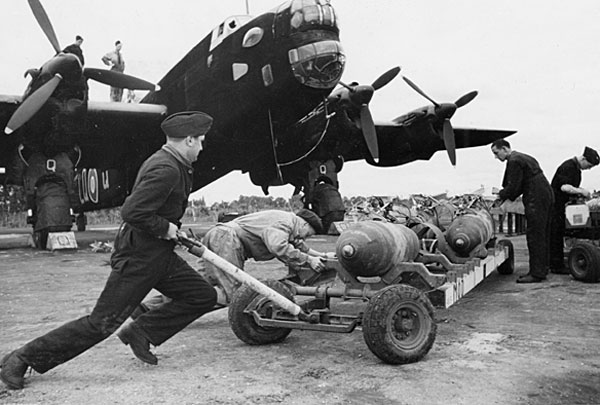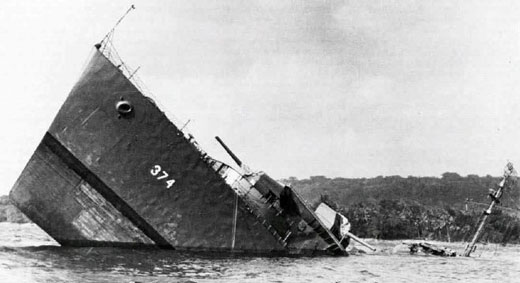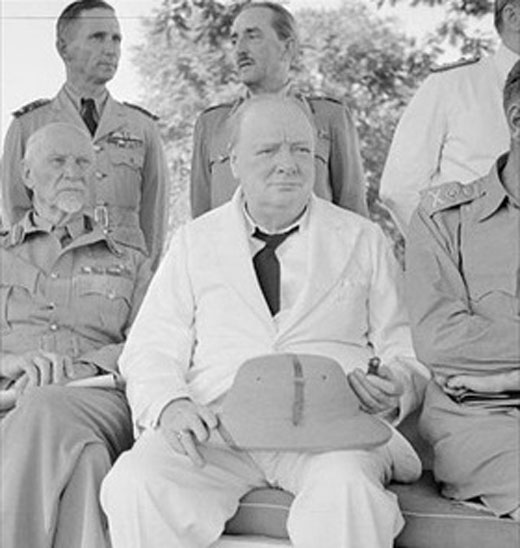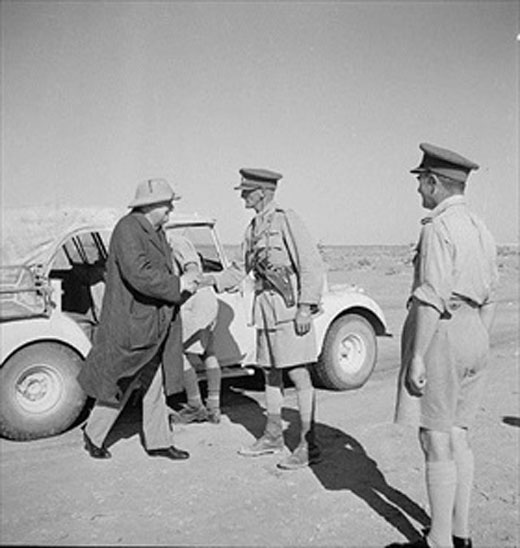Air Operations, CBI
Japanese bombers and fighters attack the USAAF airfield at Kweilin. 23rd Fighter Group P-40s shoot down 2 Ki-27 'Nate' fighters at 0730 hours.
[Air Operations, Europe
BOMBER COMMANDDaylight Ops:
- 3 Mosquitos to Germany
- Only 1 drops bombs
- No losses
- 25 planes to the Ruhr, 17 to Essen and 8 to Bochum
- Plan is to reach area by Gee, then bomb visually through cloud gaps; only 3 bomb at Bochum and 1 at Essen
- 3 Halifaxes, 1 Lancaster and 1 Wellington are lost
- In minor ops, 57 aircraft lay mines off France, Holland and Germany; 14 aircraft make leaflet flights
- 1 minelaying Wellington lost
A Halifax Being Prepared for Take-Off |
 |
Air Operations, Middle East
Gen Brereton describes three major objectives for Allied air forces in the theater. The first objective id air support to ground forces fighting the Afrika Korps. The second objective is securing the sea and air lines of communications throughout the Mediterranean. The third objective is to conduct an air offensive againast Italy and the Ploesti oil fields in Romania. If captured by German forces, Brereton designates oil fields in the Caucasus as part of the third objective. [Air Operations, Solomons
Several 11th Heavy Bomb Group B-17s attack port facilities at Tulagi Island and Kukum, Guadalcanal. 1 B-17 is shot down by an A6M2-N 'Rufe' float fighters.
[Battle of the Atlantic
Over the course of the next 9 days convoy SC-94 is attacked by a U-boat wolf pack during its passage across the Atlantic. This marks the return of the U-boats to large-scale operations on the main north Atlantic routes. SC-94 loses 11 ships, but 2 of the attacking U-boats are sunk and 4 are damaged.
[ US Destroyer Turcker Sinks At Bruat Channel |
 |
Eastern Front
There is heavy fighting in Rzhev sector of the Central Front. The German attacks continue, with Army Group A making some progress near the Kuban River establishing a bridgehead in the area of Armavir-Nevinnomyssk. This is close to the northern foothills of the Caucasus and the Maykop oilfields. Kropotkin is also taken by the Germans. The Red Army continues its courageous but apparently vain defense of the great bend of the Don in front of Stalingrad. The Russians suffer heavy losses. Kotelnikovo is occupied as the Germans start moving troops across the Kuban River.
SOUTHERN SECTORThe 21st, 1st and 4th Tank Armies halt their attacks after a total lack of success.
Hoth breaches the Soviet outer defenses around Stalingrad as the 64th and 57th Armies are attacked southwest of the city. Fierce fighting erupts at Tinguta station as panzers bog down in extensive Soviet minefields. The 4th Panzer Army suffers heavy casualties, its attack coming to a costly halt. With the Germans stalled, the Soviets launch a furious counterattack, forcing the 4th Panzer onto the defensive. As the 4th Panzer approaches from the southwest, the 6th Army hits the 64th Army.
Farther south, the 1st Panzer Army crosses the Kuban. Voroshilovsk falls but the Soviets evade encirclement by advancing German panzers. In an effort to catch the rapidly withdrawing Soviets the 1st Panzer pushes southwest toward Armavir, Maikop and Tuapse. The 17th Army plans to destroy the Soviets in teh Novorossysk, Krasnodar and Tuapse area. To accomplish this, Army Group A splits into 2 groups. Group Ruoff, with the 17th Army (5 German and 3 Rumanian divisions) is tasked with the destruction of the Coastal Group, securing the mountain passes and the Black Sea coast. Group Kleist comprises the 1st Panzer Army with 3 panzer, 2 motorized and 4 infantry divisions and 1 Slovak division. Kleist has 400 panzers at his disposal but is at the end of a long supply line that stretches 2,000 miles to the west. His target is the capture of Baku and its oilfields.
[North Africa
(7th?)Churchill visits the front. In the evening he sends a telegram to Clement Atlee, Secretary of State for the Dominions: 'Wherever the fault may lie for the serious situation which exists, it is certainly not with the troops, and only to a minor extent with their equipment.' The British Prime Minister is of the opinion that there must be an immediate change in the command of the war in the Middle East. He has lost faith in Gen Auchinleck.
|
|
Pacific
The US submarine Greenling (SS-213) attacks Japanese shipping about 150 miles north-northwest of Truk and sinks the transport Brazil Maru (12,752t) and the merchant passenger-cargo ship Palau Maru (4495t).
[
